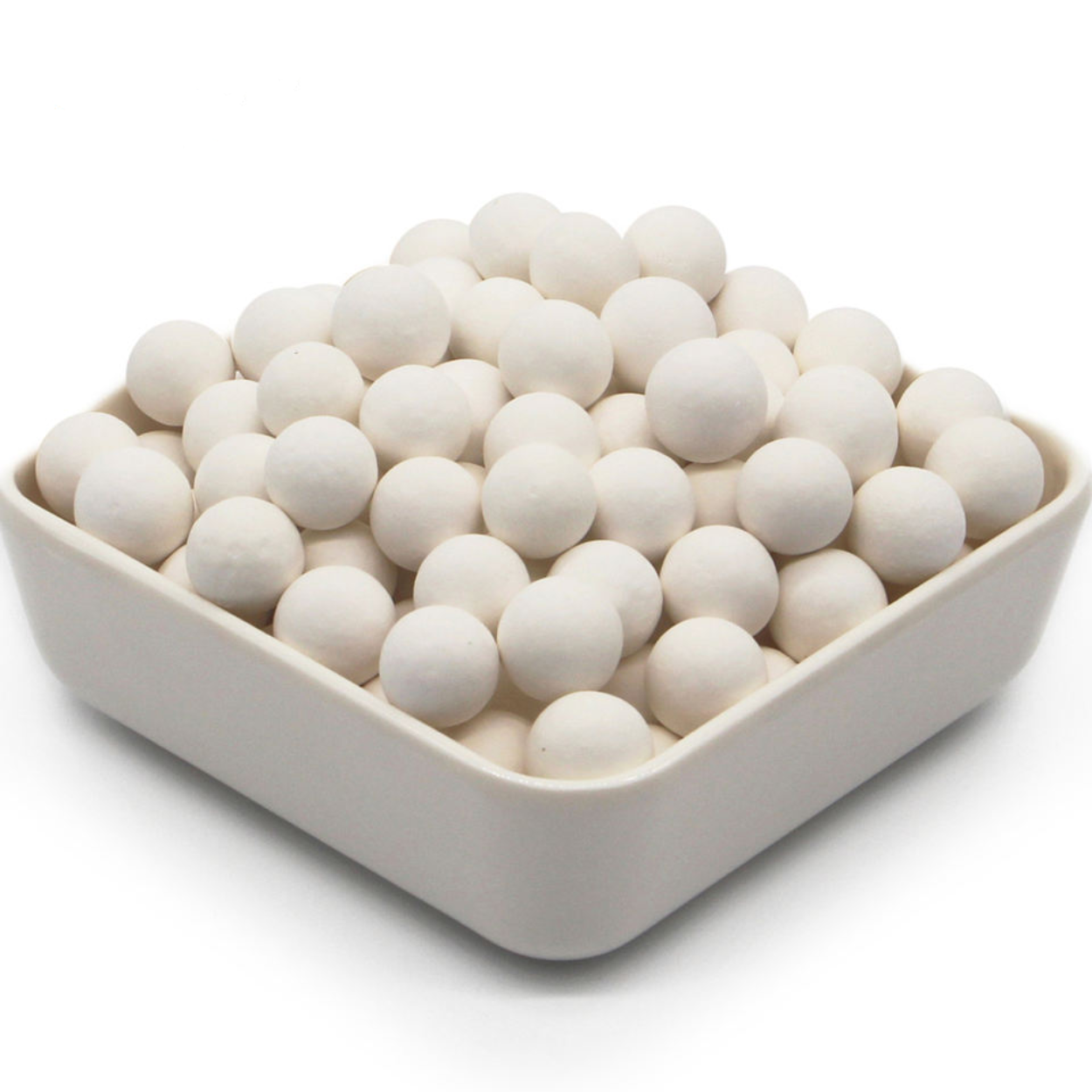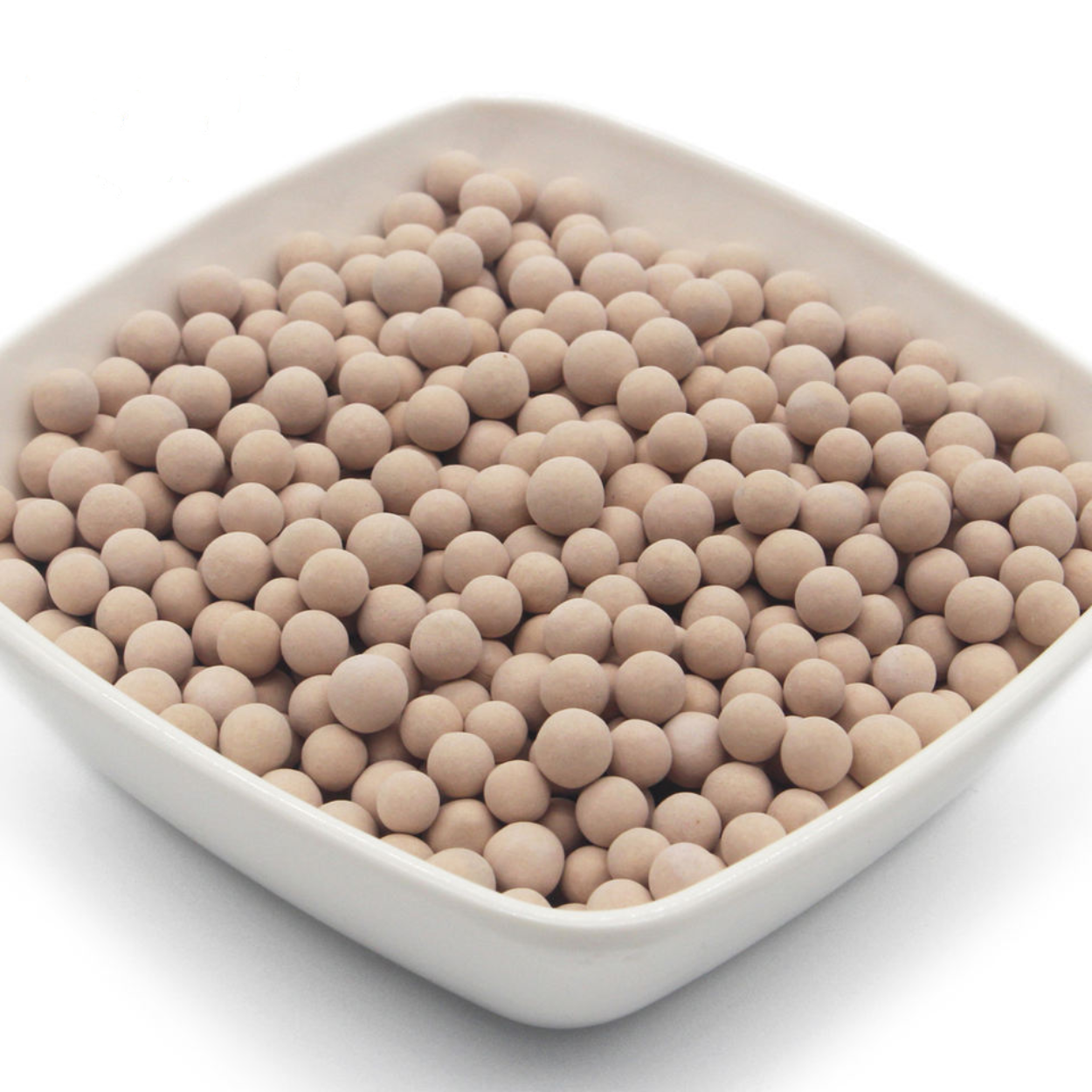
Manufacturer 4A vs 3A Molecular Sieves in LNG Dehydration
LNG dehydration mainly uses 4A molecular sieves for water and hydrocarbon removal, while 3A suits cases needing zero hydrocarbon adsorption.
Bubbles and insufficient mechanical strength are common challenges in polyurethane production. Molecular sieve activated powder, as an efficient additive, can significantly improve these issues. This guide provides a comprehensive analysis of the application principles, selection criteria, and optimization methods for 3A and 4A molecular sieve powder in polyurethane systems, helping you choose the most suitable type to achieve optimal material performance.
Molecular sieve activated powder plays multiple key roles in polyurethane materials, making it an ideal solution for common defects such as bubbles and poor mechanical properties.
Moisture-Induced Bubble Formation & Adsorption Mechanism: Trace moisture (especially in polyether polyols) reacts with isocyanates to form CO₂ bubbles. 3A/4A molecular sieve powder, with uniform pore sizes (0.3-0.4nm), selectively adsorb water molecules (diameter ~0.26nm), preventing this side reaction. Tests show adding 3% 4A sieve reduces moisture to below 0.02%, eliminating bubbles.
Enhancing Strength & Toughness: Acidic sites on sieve surfaces catalyze isocyanate-hydroxyl reactions, increasing crosslink density by 15-20%. Surface-treated sieves (e.g., silane coupling) improve interfacial bonding, reducing stress concentration. Fine particles (1-5μm) act as physical crosslinking points, improving tensile strength (by 20-30%) and elongation (by 10-15%).
Curing Kinetics & Process Stability: Unmodified sieves may accelerate curing due to surface alkalinity. Modified sieves (lower pH or hydroxyl-treated) can extend pot life by 10-30%, enhancing dimensional stability.
| Mechanism | Effect | Performance Gains |
|---|---|---|
| Moisture Adsorption | Blocks CO₂ bubble formation | Moisture <0.02%, porosity <1% |
| Crosslink Optimization | Catalyzes uniform reactions | Crosslink density ↑15-20% |
| Nano-reinforcement | Particle pull-out effect absorbs energy | Tensile strength ↑20-30%, elongation ↑10-15% |
| Process Stabilization | Controls curing speed | Pot life ↑10-30%, dimensional stability ↑ |
| Parameter | 3A Activated Powder | 4A Activated Powder | Impact |
|---|---|---|---|
| Chemical Composition | K⁺ ion exchange (K₂O·Al₂O₃·2SiO₂) | Na⁺ type (Na₂O·Al₂O₃·2SiO₂) | 3A has higher selectivity for water |
| Effective Pore Size | 3Å (0.3nm) | 4Å (0.4nm) | 4A has 5-8% higher adsorption capacity |
| Static Water Adsorption | ≥23% | ≥24% | 4A is more suited for higher water content |
| Curing Behavior Impact | Lower alkalinity, milder reaction | Stronger adsorption, accelerates cure | Choose 3A for controlled curing, 4A for deep drying |
| Application Scenarios | Complex polyols, solvent-sensitive | High-solid content, aggressive dehydration | Application-specific choice |
3A’s smaller pore size makes it highly selective, ideal for polyols with complex compositions, while 4A is preferred for aggressive moisture removal in systems requiring fast and deep dehydration.
| Polyurethane Type | Recommended Molecular Sieve | Dosage | Key Benefit | Notes |
|---|---|---|---|---|
| Elastomers & Sealants | 4A (Titanate modified) | 2-5% | Peeling strength up to 8-10MPa | Requires high-shear dispersion |
| Optical Coatings | Ultra-fine 3A (2-4μm) | 0.5-1.5% | Light transmittance >92% | Avoid overloading to maintain transparency |
| Outdoor Durable Coatings | High-temp activated 4A | 1-3% | Weather resistance extended to 20 years | Combine with UV absorbers |
| 2K Adhesives | Low pH modified 3A | 1-2% | Pot life extended by 20-30% | Split addition into A/B components |
| Waterborne Polyurethane (WPU) | Epoxy-modified 4A micropowder | 5-10% (solid ratio) | Water resistance ↑60% | Requires reflux stirring 2-5h |
| Parameter | Recommended Range | Optimization Tips | Control Target |
|---|---|---|---|
| Dosage | 0.5-3% (typically 0.5-2%) | Calculate based on water content | Moisture <0.02%, viscosity ↑<30% |
| Dispersion | High-shear 1500-3000rpm, 15-30min | Pre-dispersing as slurry improves uniformity | D90 <10μm, no visible agglomerates |
| Activation | 120℃/2h or 300-350℃/5-10min | Fluidized bed preferred | LOD ≤1.5%, adsorption capacity ≥22% |
| Formulation Synergy | Silane coupling 1-2%, defoamer reduction 30% | Surface-treated sieve improves compatibility | Pot life ↑20-30%, porosity <1% |
Proper dispersion, precise dosage, and effective activation are key to maximizing performance while maintaining processability.
| Problem | Cause | Solution | Prevention |
|---|---|---|---|
| Fast Curing | Sieve surface alkalinity; heat release | Use high K-exchange 3A; surface modification | Pre-test pH, limit dosage ≤2% |
| Poor Dispersion & Agglomeration | Particle cohesion | High-shear/ultrasonic dispersion; titanate treatment | Narrow particle size distribution |
| Yellowing in Light Colors | Impurities; oxidation | High-whiteness sieve; optical brighteners | Avoid over-activation; use antioxidants |
| Post-Storage Bubbles | Nitrogen adsorption | Use low-N adsorption sieves | Ca²⁺/K⁺ mixed ion type sieves |
Low-nitrogen adsorption sieves to prevent delayed bubble formation.
pH-tunable sieves to suit different PU systems.
Smart-release sieves that dynamically adjust viscosity during curing.
Nano-composite sieves for enhanced thermal/electrical properties.
Eco-friendly regeneration technologies for lower energy consumption.
With proper selection and process control, 3A and 4A molecular sieve powders can effectively eliminate bubbles, enhance strength and durability, and improve process stability across diverse polyurethane applications.

LNG dehydration mainly uses 4A molecular sieves for water and hydrocarbon removal, while 3A suits cases needing zero hydrocarbon adsorption.

Achieve ultra-deep dehydration of cracked gas with 3A molecular sieves—remove water without ethylene/propylene loss, ensuring catalyst life and product purity.

Home Desiccant Activated Alumina for air compressor drying gas purification wholesale Email WhatsApp Product Inroduction: Desiccant Activated Alumina for air

Home Adsorbent Zeolite 13x Molecular Sieve for Removing Odor From LPG in air Freshener Plant Email WhatsApp Product Inroduction: Adsorbent Zeolite
As a leading molecular sieve manufacturer, we share the latest industry news and insights on adsorbents like molecular sieves, sieve powder, and activated alumina.

Combined zeolite 3A molecular sieves, activated carbon, and plastic Pall rings in solvent recovery. Explore performance,
advantages, and industrial best practices.

3A molecular sieve achieves ultra-deep dehydration for natural gas, reaching dew points below -70°C with high selectivity, stability, and efficiency.

Solve rapid curing issues in polyurethane adhesives with molecular sieve powder—achieve better pot life, bubble control, and product quality.